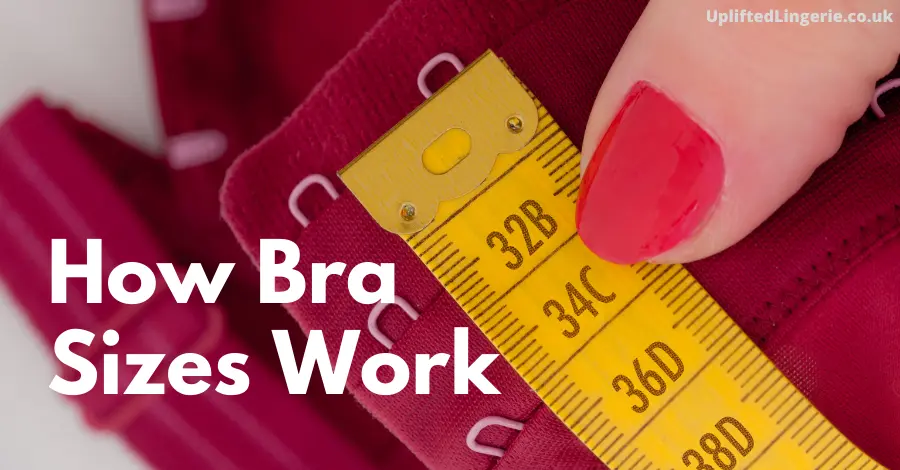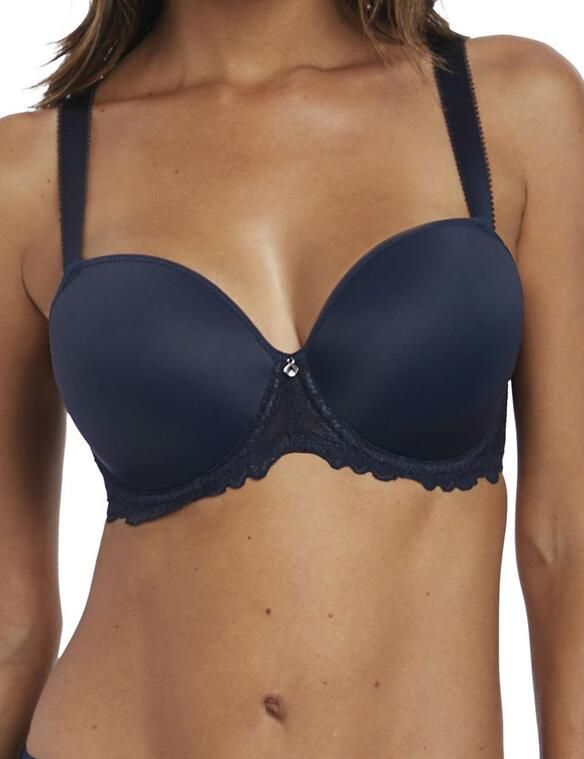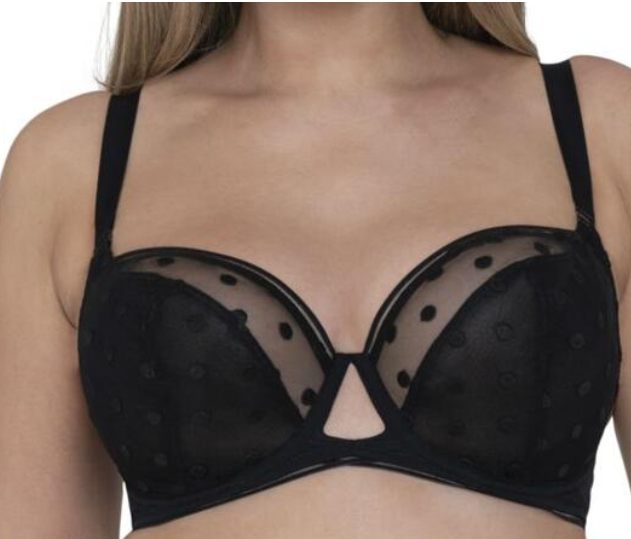
Having bra sizes explained is important to all women at some point in their life but it is surprising how many fail to get a proper grasp on them. Bra sizes consist of a band size (the number) and a cup size (the letter or letters). The band size is the measurement around your rib cage in inches, whilst the cup size reflects the difference between the size of your rib cage and the size of your bust. Wearing the right bra size is the key to getting the right support, as well as a comfortable fit.
Ever tried on a bra that fits just right? Game changer, right? Suddenly, your posture's a bit straighter, your mood lifts, and you feel like you're ready to strut onto any stage. But here's the thing: many of us want bra sizes explained properly. When it comes down to it, there's a duo of figures we need to get familiar with; the band size and cup size. In this article, we’ll explain more about how they are calculated, as well as how you can ensure that you’re wearing the right size bra.
The Legend Of The Perfectly-Fitted Bra
Do you remember seeing bra sizes for the first time as a teenager? They look like a jumble of numbers and letters and you may be left feeling confused and overwhelmed.
You may be tempted to head to a high street store to get measured for a bra. After all, that would take some of the confusion away, right?
The problem is, that many high street stores use outdated methods of measuring bra size, adding on several inches to your band size and leaving you with a bra that rides up your back and doesn’t give you the support that you need.
A properly fitted bra leaves you oozing with confidence, and we believe that every woman deserves this. But how do you ensure that you’re wearing the right size bra if even the high street retailers aren’t always getting it right? We’ve got you covered.
View our full range of bras here

How Do Bra Sizes Work?
So, how do you calculate bra size? Two measurements are needed to calculate your bra size. These are your band size and your cup size. Your band size makes up the number while your cup size is represented by the letter.
The only equipment that you need to measure your bra size is a flexible tape measure. You’ll find your bra size by measuring around your rib cage and your bust. Read on to discover how to calculate your bra size correctly.
Band Size
Your band size is the number that you see within your bra size. For example, 30, 36 or 40. This refers to the size of your rib cage.
To measure your band size, wrap your tape measure around your rib cage, directly under your bust. The tape measure should lie exactly where the band of your bra would naturally sit. It should be level and snug. The number in inches is your band size.
This is where many high street stores go wrong as they are renowned for adding several inches to this measurement. This is because back in the 1950s, bras were made from silk and satin and did not stretch. However, fast-forward to the 21st century and our bras now allow for stretch, so we don’t need to add anything onto this measurement.
So, if you measure around your rib cage and find that it is 32 inches, this is your band size. If the number is an odd number, you might need to try the band size below and above to see which fits you best.
Cup Size
Your cup size is letters than you see in your bra size, for example, B, DD or G. This refers to the size of your breasts in relation to the size of your rib cage.
To measure your cup size, wrap a measuring tape around the fullest part of your bust, level with your nipple, and then round the number in inches to the nearest whole number. You’ll then need to subtract your band measurement from this number.
So, if your bust measurement is 41” and your band measurement is 34”, you’ll do the calculation 41-34 and be left with 7”. You can then use the table below to discover your cup size. In this example, your bra size would be 34F.
| Difference (inches) |
Cup Size |
| Less than 1" |
AA |
| 1" |
A |
| 2" |
B |
| 3" |
C |
| 4" |
D |
| 5" |
DD |
| 6" |
E |
| 7" |
F |
| 8" |
FF |
| 9" |
G |
| 10" |
GG |
| 11" |
H |
| 12" |
HH |
| 13" |
J |
| 14" |
JJ |
| 15" |
K |
| 16" |
KK |
| 17" |
L |
Find our D+ bras here
Fit Is More Important Than Measurements
Whatever the calculations say that your bra size is, the fit of your bra is far more significant. Use this calculation as a starting point to try on different bra sizes and find the right bra for your body type.
It might be that you need to increase or decrease your band or cup size slightly to find the right fit. You may also notice that your size varies slightly between different brands and styles of bra.
Get the perfect fit with our fitting guide

What Is A Sister Size?
Ever come across the term "sister size" in the world of bras? And nope, it's not the size your sibling rocks. A "sister size" is bra lingo for another bra size that holds the same cup volume as yours.
Let's break it down. As you might know, your cup size isn't a standalone measurement. It's linked directly to your band size, representing the difference between your bust and rib cage measurements. For instance, if you're flaunting a D cup, it indicates your bust is 4 inches more ample than your rib cage. Now, let's say you choose a wider band; you'd then slip into a C cup since the difference would now be just 3 inches.
Imagine if your rib cage got roomier, but your ladies stayed the same. You'd bump up your band size and take the cup size down a notch. Rocking a 28F bra and put on a bit around the rib area without any top-tier changes? It might be time to make friends with a 30E.
Here's the fun bit: sister sizes have identical cup volumes! So, sizes like 28E, 32C, and 36A? Yep, they're all siblings in the cup department. Having this nifty knowledge helps you tweak your bra size for that chef's kiss fit. Let's say you're all comfy in the cup but the band's doing the cha-cha. Time to dial down the band size and ratchet up that cup.
Wear a 34E but feeling the itch for a snuggier band? Slide into a 32F. It might seem like you've super-sized the cup, but the volume's still playing the same tune—it's just grooving to the beat of the band. And if you took a chance with a 32E? Well, you'd feel that cup getting a bit cosier.
For on-trend DD+ support, discover our Curvy Kate range of bras
How Should A Bra Fit?
Getting the right fit is critical to ensuring your comfort. You’ll probably find that your bra size will vary slightly depending on the brand and style of bra, so it’s important to know how your bra should fit so that you can tell whether it’s the right size.
When you put your bra on, it’s important to begin with a ‘swoop and scoop’. Reach into your bra cup and scoop your breast tissue from underneath your armpit so that it sits inside the cup. Check that your breast tissue isn’t spilling out of the top of the cup and make sure that any wiring isn’t pressing into your breast tissue.
Then, check how your band is sitting on your back. It should be level all the way around and shouldn’t be riding up at the back. You should only be able to fit two fingers under the band when it is fastened on the loosest hook.
Next, make sure that the centre of the bra sits flat against your chest. It shouldn’t move when you lift your arms up in front of you. If the centre doesn’t sit flat on your chest, the band is too big.
Finally, tighten your straps just enough that they don’t fall off your shoulders, but not so much that your shoulders begin to support the weight of your breasts. 80% of your support should be coming from your band. This will help to prevent back and shoulder pain.
Read our full fitting guide here
Related Questions
What Is ABCD In Bra Size?
The letter in your bra size refers to your cup size. This is relative to your band size. It’s calculated by subtracting your ribcage measurement from your bust measurement. The number that you are left with will tell you your cup size. For example, if the difference between your rib cage measurement and your bust measurement is 6 inches, your cup size would be an E.
Which Cup Size Is Bigger B Or C?
If the band size remains the same a C cup would be bigger than a B cup. However, your cup size is directly related to your band size as it reflects the difference between the size of your rib cage and the size of your bust. If you reduce your band size, you’ll need to increase your cup size to keep the volume the same. This means that the cup volume would be bigger in a 36B bra than a 32C.
Is D Cup Considered Big?
Your cup size is relative to your band size. If your breasts are a D cup, this means that your bust measurement is four inches larger than your band measurement. Whether or not a D cup is considered big depends on your own perception. However, it’s important to remember that a 28D is a smaller cup volume than a 36D, as the cup volume depends on your band size.
How Do You Measure Your Bra Size At Home?
To measure your bra size at home, you'll need a soft measuring tape. Start by measuring directly under your bust, keeping the tape snug but not too tight, to find your band size. Next, measure around the fullest part of your breasts to determine your bust measurement. The difference between these two measurements will determine your cup size. Remember, each inch difference corresponds to a letter (1 inch = A, 2 inches = B, and so on). Once you have both measurements, consult a sizing chart or guide specific to the brand you're considering, as sizes may vary slightly between brands.
Find The Perfect Bra For Your Body Shape
How do bra sizes work? If you’re ready to discover the perfect bra for your body shape, we are here to help. If you have any questions about how to find the right bra size, feel free to send us an email or give us a call. We’re so confident that we can help you find the perfect bra that we are happy to offer an exchange or refund if your new bra isn’t quite right for you.
Discover our full range of bras here